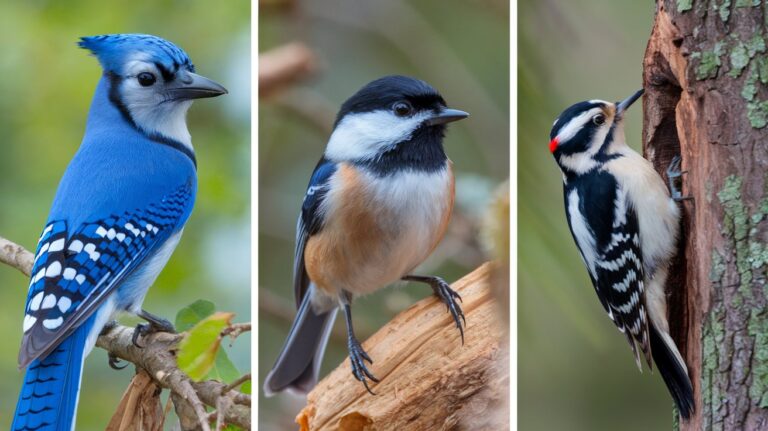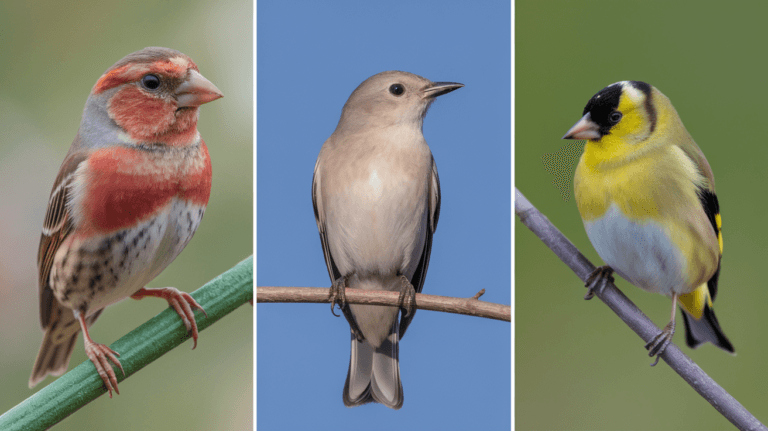Backyard Birds In Arkansas (25 Species With Pictures!)
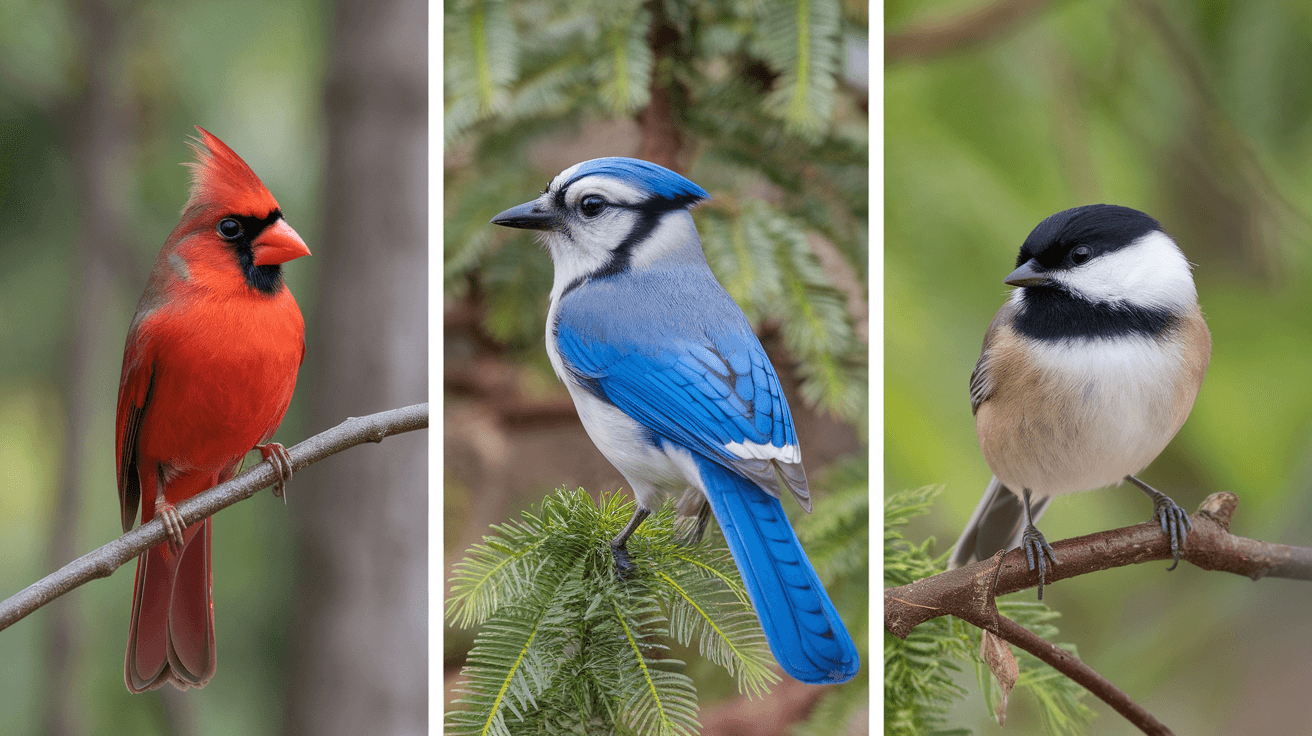
Arkansas is home to a diverse range of bird species, with over 400 different types recorded across the state. From vibrant songbirds to majestic raptors, the Natural State offers a haven for birdwatchers and nature lovers alike.
While you may spot many different species in your backyard, some birds are more common visitors than others. In this article, we will explore 25 of the most popular backyard birds in Arkansas, helping you identify them by their appearance, calls, and behaviors.
Whether you’re a seasoned birder or just starting out, this guide will make it easier to recognize and appreciate the feathered friends that frequent your yard.
Jump to a Section
- 1) Northern Cardinal
- 2) American Robin
- 3) Blue Jay
- 4) Carolina Chickadee
- 5) Tufted Titmouse
- 6) Eastern Bluebird
- 7) Red-bellied Woodpecker
- 8) House Finch
- 9) American Goldfinch
- 10) Mourning Dove
- 11) Downy Woodpecker
- 12) Carolina Wren
- 13) White-breasted Nuthatch
- 14) Eastern Phoebe
- 15) Song Sparrow
- 16) Dark-eyed Junco
- 17) Ruby-throated Hummingbird
- 18) Brown Thrasher
- 19) Indigo Bunting
- 20) Red-winged Blackbird
- 21) Eastern Towhee
- 22) Cedar Waxwing
- 23) Yellow-rumped Warbler
- 24) Pine Siskin
- 25) Chipping Sparrow
1) Northern Cardinal
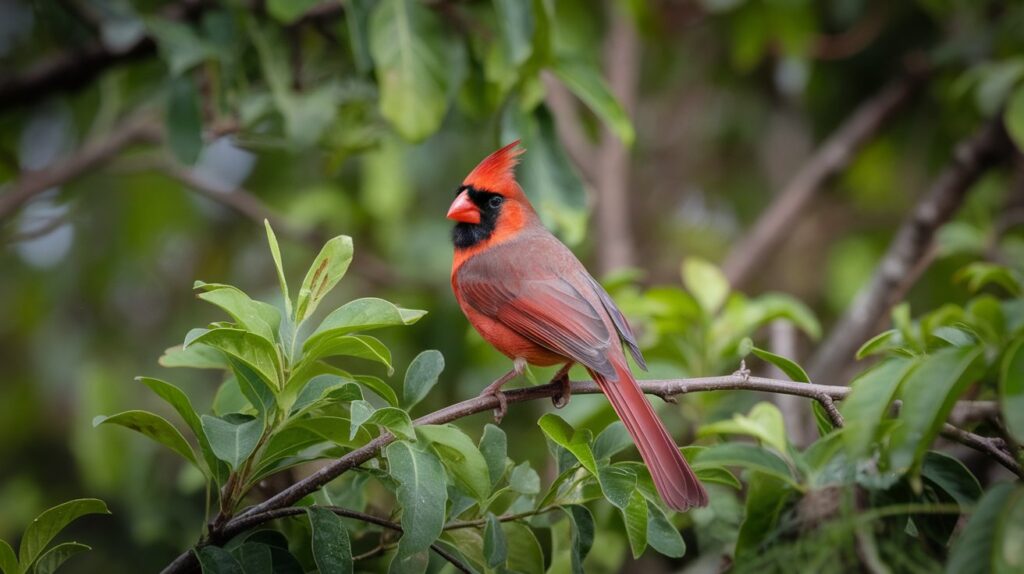
The Northern Cardinal stands out with its bright red feathers and pointed crest. Males show off brilliant red, while females have more subtle brownish-red plumage with reddish accents.
These birds stays in Arkansas year-round and loves sunflower seeds and safflower seeds at feeders. Their loud, clear whistling sounds fill gardens from dawn to dusk.
Cardinals often visits bird feeders in pairs and defends their territory fiercely against other cardinals.
2) American Robin
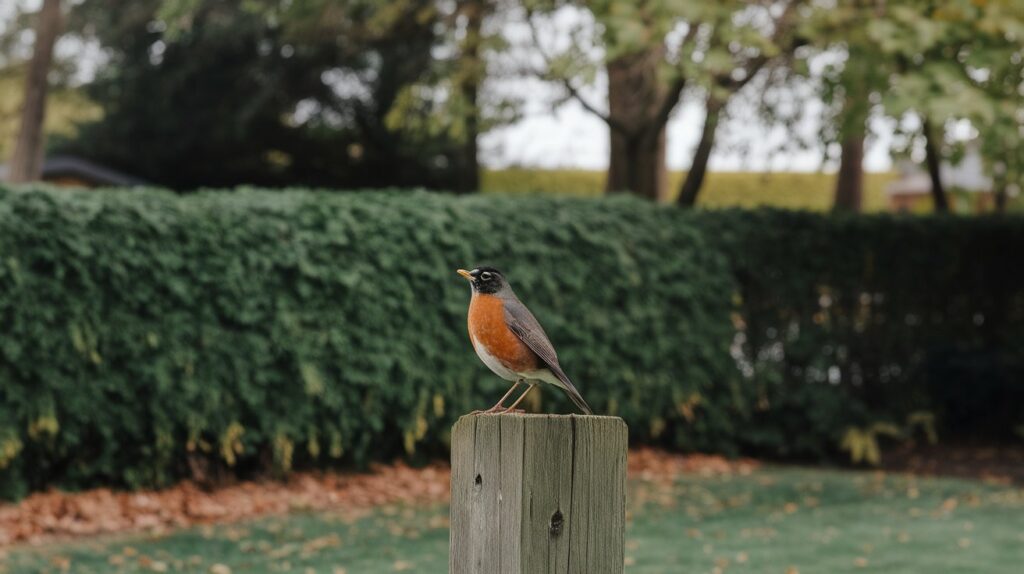
The American Robin has a rusty-red breast and dark gray back that makes it easy to spot. These birds hop across lawns hunting for worms and insects they can pull from the ground.
Robins builds cup-shaped nests and lays distinctive blue eggs that many people recognize. During winter, they gather in large flocks to eat berries and fruits.
You’ll see them more often in early spring when they return to yards after the snow melts.
3) Blue Jay
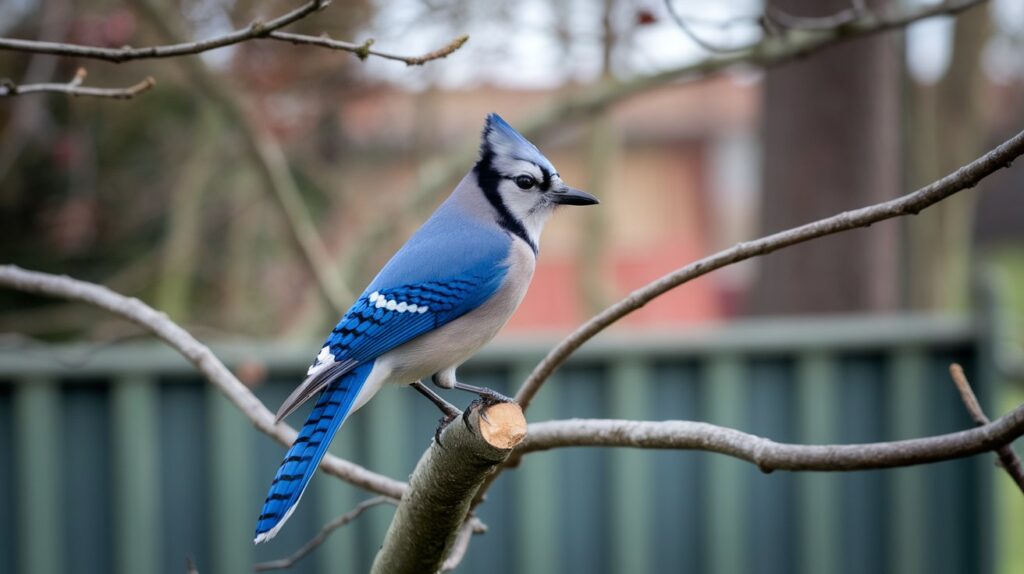
The Blue Jay brings a flash of bright blue to any yard with its noisy presence. These birds has bold blue, white, and black patterns with a distinctive crest on their head.
Blue Jays are smart problem-solvers that can imitate hawk calls to scare away other birds. They love peanuts and acorns, storing extras by burying them for later.
Their loud “jay-jay” calls often alert other birds to danger like hawks or cats nearby.
4) Carolina Chickadee
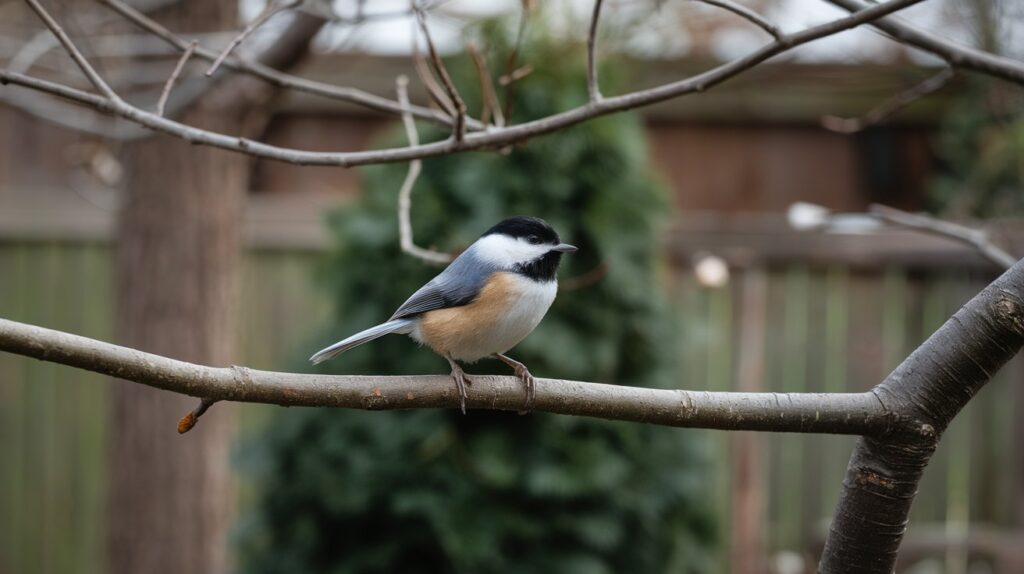
The tiny Carolina Chickadee weighs less than half an ounce but brings big personality to feeders. These birds have a black cap and bib with white cheeks and grayish back.
They dart quickly between trees and feeders, rarely sitting still for long. Chickadees calls their own name with their “chick-a-dee-dee” sound, adding more “dees” when they spot danger.
They love black oil sunflower seeds and suet from feeders year-round.
5) Tufted Titmouse
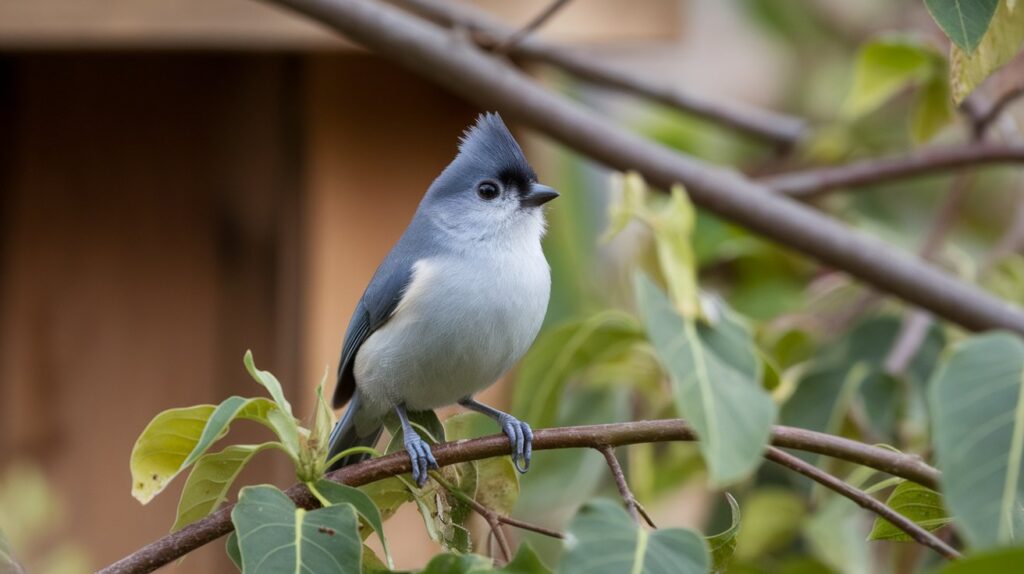
The Tufted Titmouse sports a cute pointed crest and big black eyes on its gray body. These small birds have peachy-colored sides that brighten up winter days.
Titmice takes one seed at a time from feeders, flying to a branch to crack it open before returning. They often forms the core of mixed feeding flocks in winter alongside chickadees and woodpeckers.
Their clear whistled “peter-peter-peter” calls echo through Arkansas neighborhoods all year.
6) Eastern Bluebird

The Eastern Bluebird dazzles with its bright blue back and rusty-orange chest. Males have the most vivid colors, while females show more muted versions of the same pattern.
These birds prefers open areas with scattered trees and loves special bluebird nest boxes. Bluebirds hunts insects by watching from perches, then swooping down to catch them on the ground.
Their soft warbling songs sounds especially sweet during early spring mornings.
7) Red-bellied Woodpecker
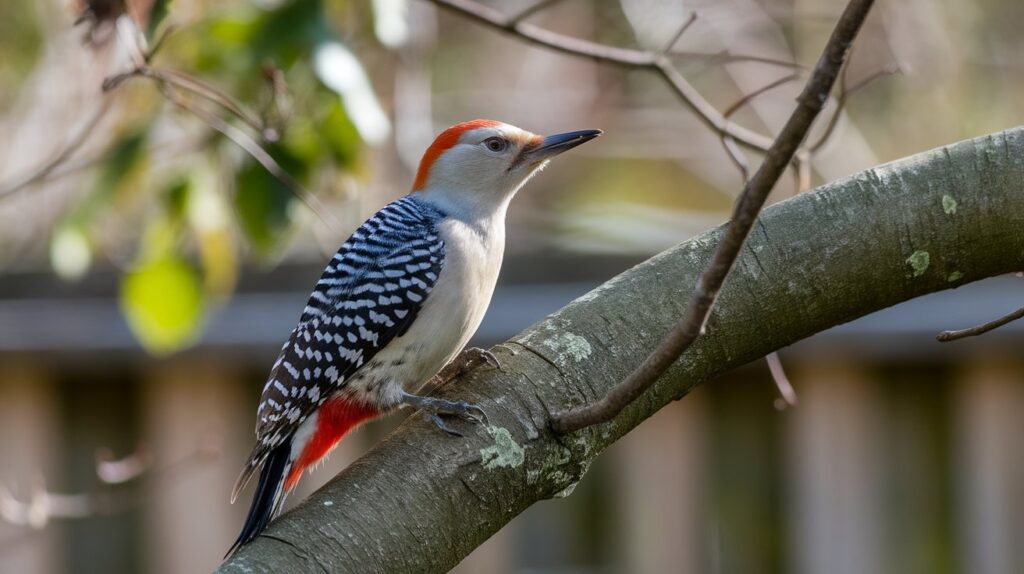
Despite its name, the Red-bellied Woodpecker actually has a barely visible pinkish wash on its belly. What stands out more is the bright red cap on males (females have it only on the back of their head) and zebra-patterned back.
These woodpeckers drills holes in trees to find insects and store nuts. They visit suet feeders and platform feeders offering peanuts regularly.
Their rolling “churr” call and drumming on hollow trees announces their presence year-round.
8) House Finch
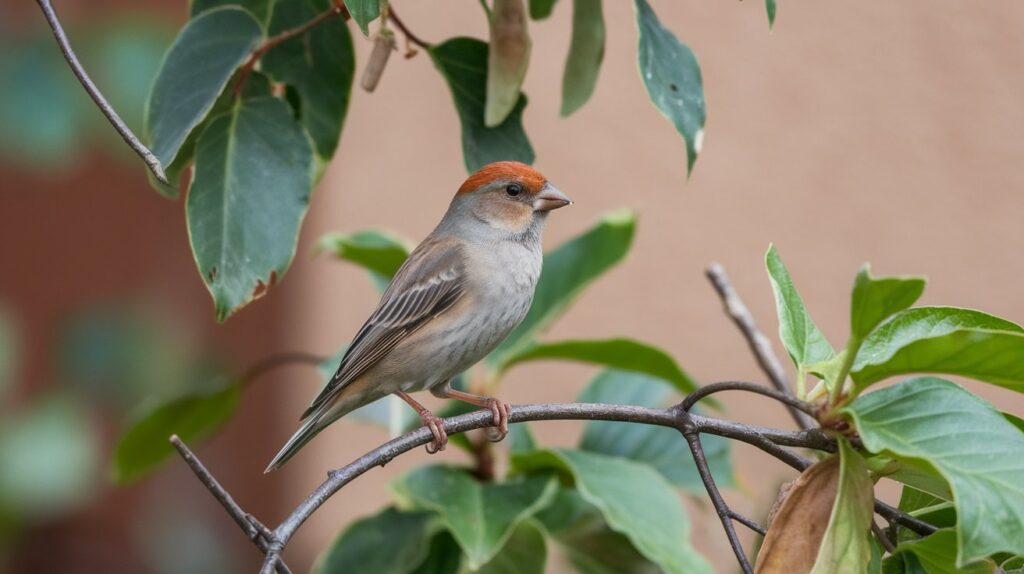
The House Finch males have a strawberry red head and breast that they get from eating red berries. Females are streaky brown without the red coloring.
These birds travels in small flocks and loves black oil sunflower seeds from tube feeders. House Finches sings a long, warbling song with many variations and notes.
Originally from western states, they now thrives throughout Arkansas after being introduced decades ago.
9) American Goldfinch
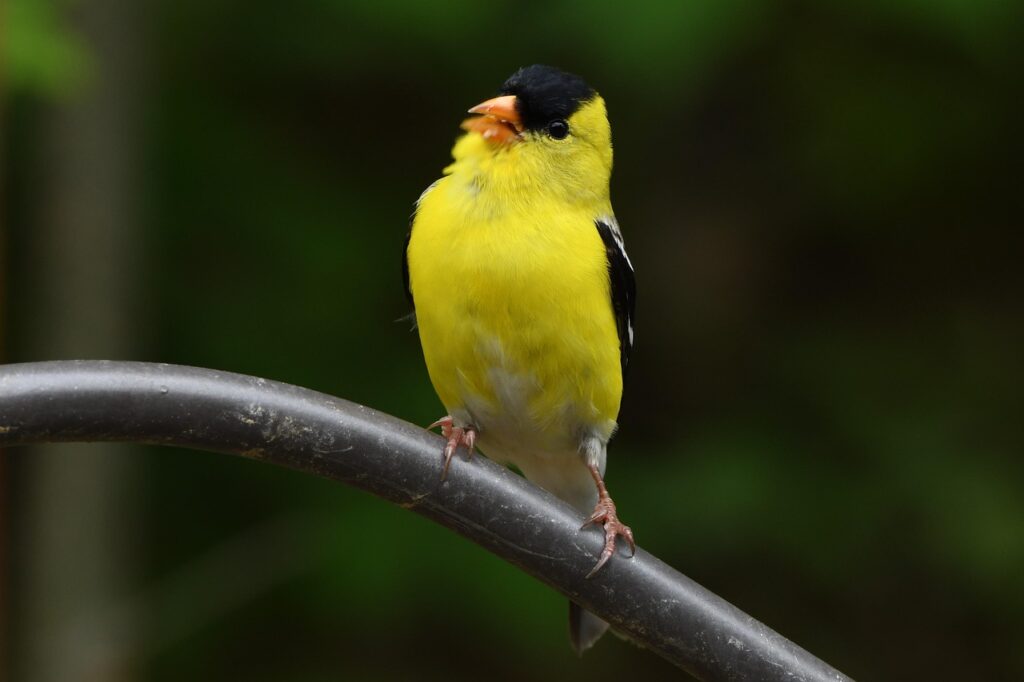
The American Goldfinch transforms dramatically with the seasons. Summer males shine bright yellow with black wings and cap, while winter birds wear more subtle olive-brown colors.
These small finches loves thistle seeds and hangs upside down on special nyjer seed feeders. Goldfinches builds their nests later than most birds, waiting for thistle down to become available in mid-summer.
Their bouncy flight pattern and sweet “po-ta-to-chip” calls makes them easy to spot.
10) Mourning Dove
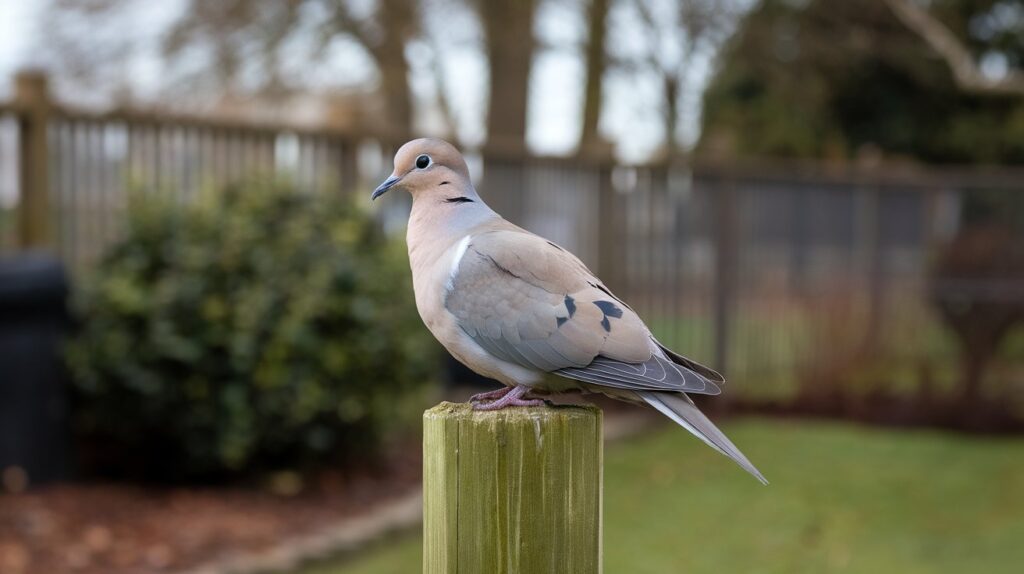
The Mourning Dove has a soft tan color and small head compared to its plump body. These common birds makes a distinctive whistling sound with their wings when taking off and landing.
Doves prefers feeding on the ground below feeders, picking up fallen seeds. Their mournful “coo-OO-oo-oo” gives them their name and echoes through neighborhoods.
They builds flimsy-looking stick nests but still successfully raises several broods each year.
11) Downy Woodpecker
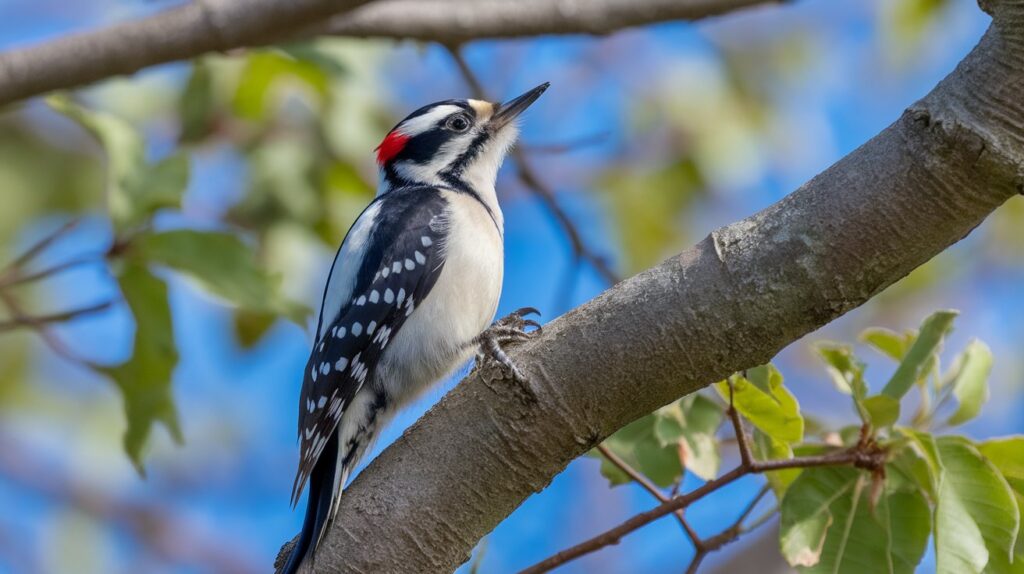
The Downy Woodpecker is the smallest woodpecker in Arkansas, about the size of a sparrow.
These birds have a bold black and white pattern with males showing a small red patch on the back of their head. Downys clings to tree trunks, branches, and even tall weed stalks looking for tiny insects.
They readily visits suet feeders and can hang upside down to reach food. Their quick “pik” call and drumming sounds softer than larger woodpeckers.
12) Carolina Wren
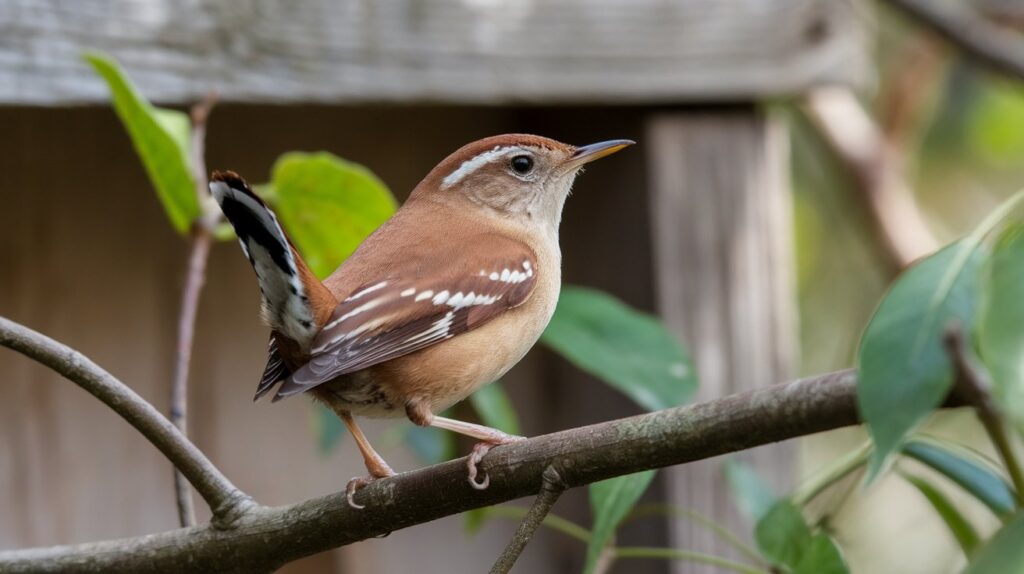
The Carolina Wren packs a loud voice into a small rusty-brown body with a distinctive white eyebrow stripe.
These energetic birds explores brush piles and dense vegetation, constantly flicking their upright tails. Wrens sings a loud “tea-kettle, tea-kettle, tea-kettle” song that seems too powerful for their size.
They builds dome-shaped nests in strange places like flowerpots, boots, or mailboxes. Carolina Wrens stays in Arkansas year-round and visits suet feeders regularly.
13) White-breasted Nuthatch
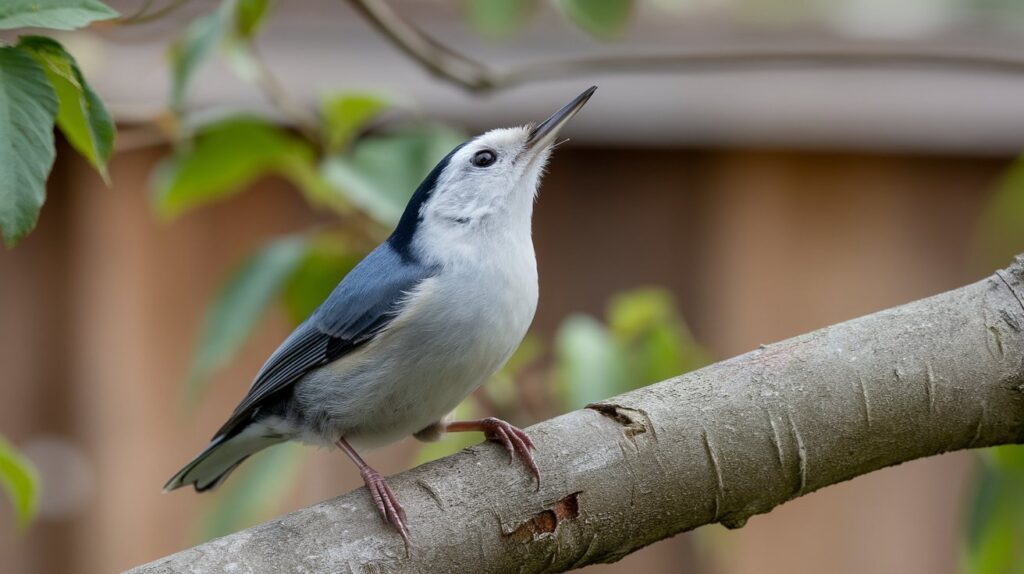
The White-breasted Nuthatch has a unique habit of walking headfirst down tree trunks. These birds shows off a blue-gray back, black cap, and clean white face and belly.
Nuthatches stores seeds by jamming them into tree bark crevices, giving them their name of “nut hatcher.”
Their nasal “yank-yank” calls announces their presence at feeders. They loves black oil sunflower seeds and peanuts they can wedge into bark to break open.
14) Eastern Phoebe
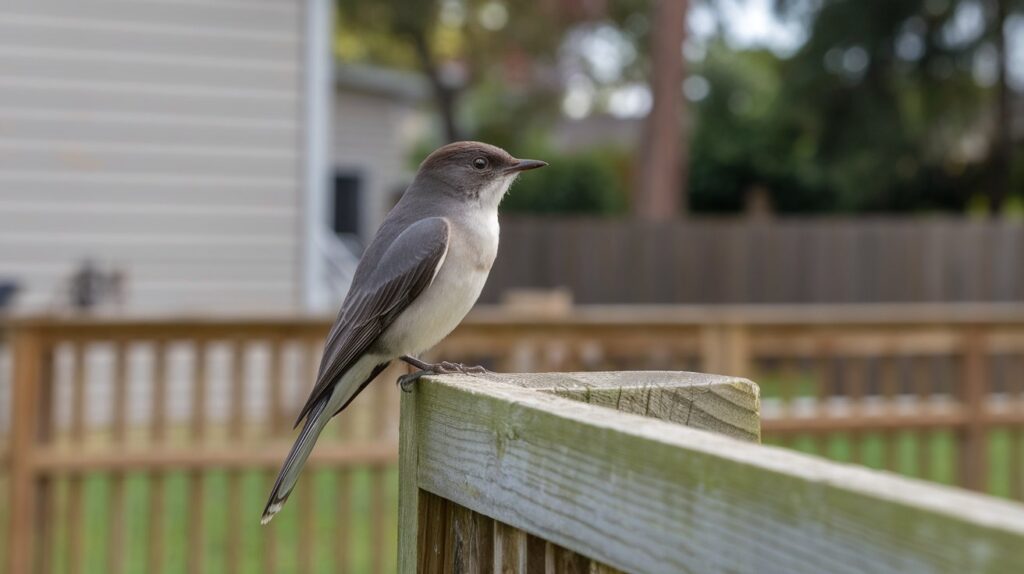
The Eastern Phoebe pumps its tail constantly while perched on low branches or fence posts. These flycatchers has a gray-brown back and light underparts with a slightly darker head.
Phoebes catches insects in mid-air with quick darting flights from their perch. Their name comes from their raspy “fee-bee” call that they repeats tirelessly.
These birds often builds nests on human structures like porches and bridges, returning to the same spot year after year.
15) Song Sparrow
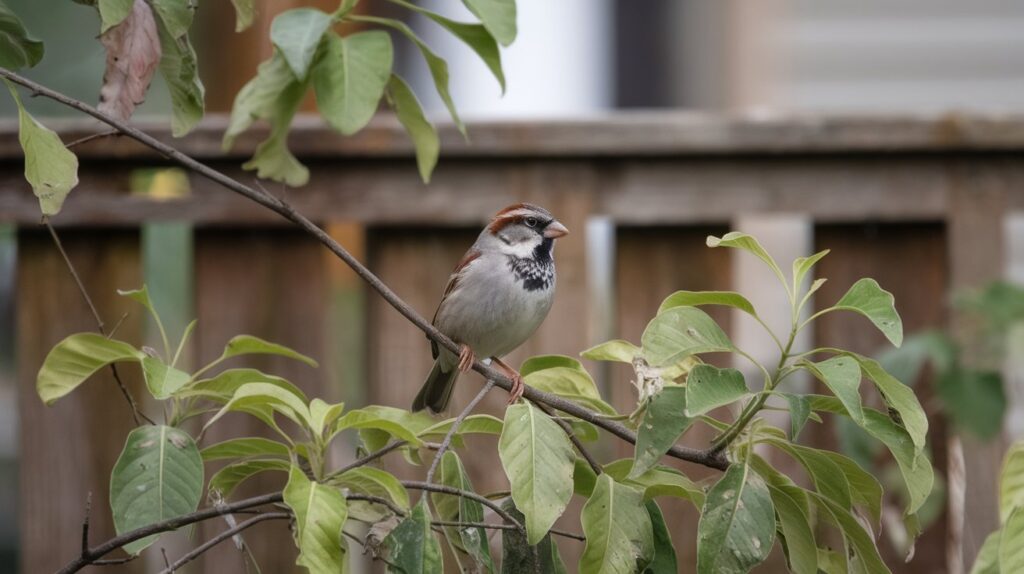
The Song Sparrow has heavy brown streaking on its white chest, often forming a central spot. These adaptable birds lives in many habitats from backyards to marshes across Arkansas.
Sparrows sings a beautiful series of trills and notes that varies among individuals. They scratches in leaf litter under shrubs looking for seeds and insects.
Song Sparrows stays year-round in most parts of Arkansas and visits platform feeders with mixed seeds.
16) Dark-eyed Junco
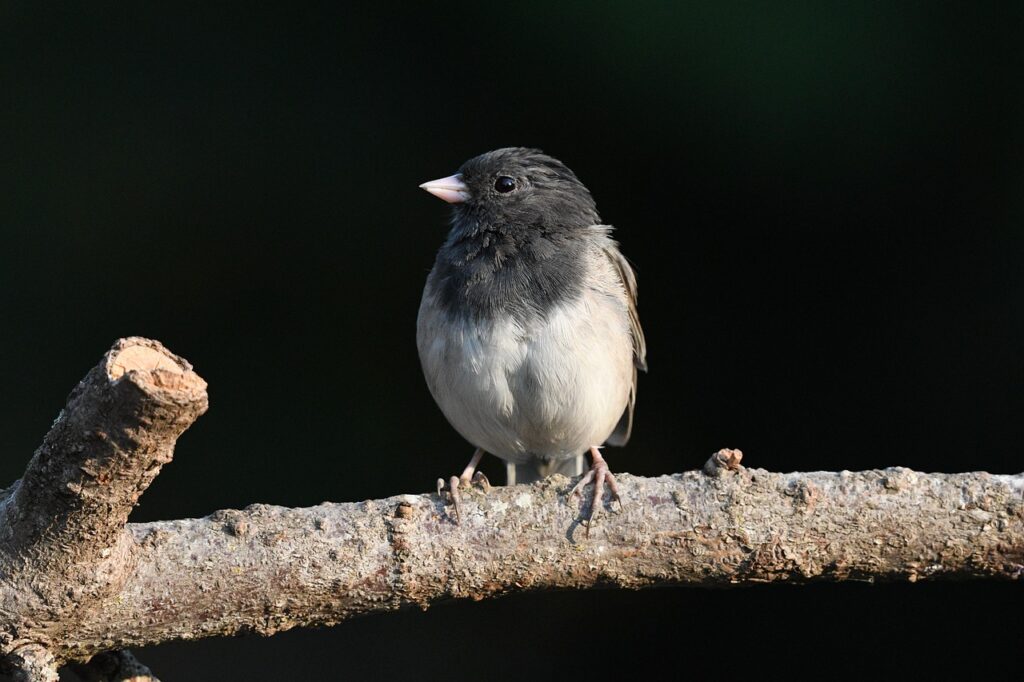
The Dark-eyed Junco visits Arkansas yards mainly in winter with its distinctive slate-gray top and white belly.
These birds looks like they’re wearing a dark hood, with a pink bill and white outer tail feathers that flash when they fly. Juncos feeds mostly on the ground, hopping beneath feeders to pick up fallen seeds.
Their twittering calls and soft trills adds to winter bird chorus. Locals sometimes calls them “snowbirds” because they arrive with cold weather.
17) Ruby-throated Hummingbird
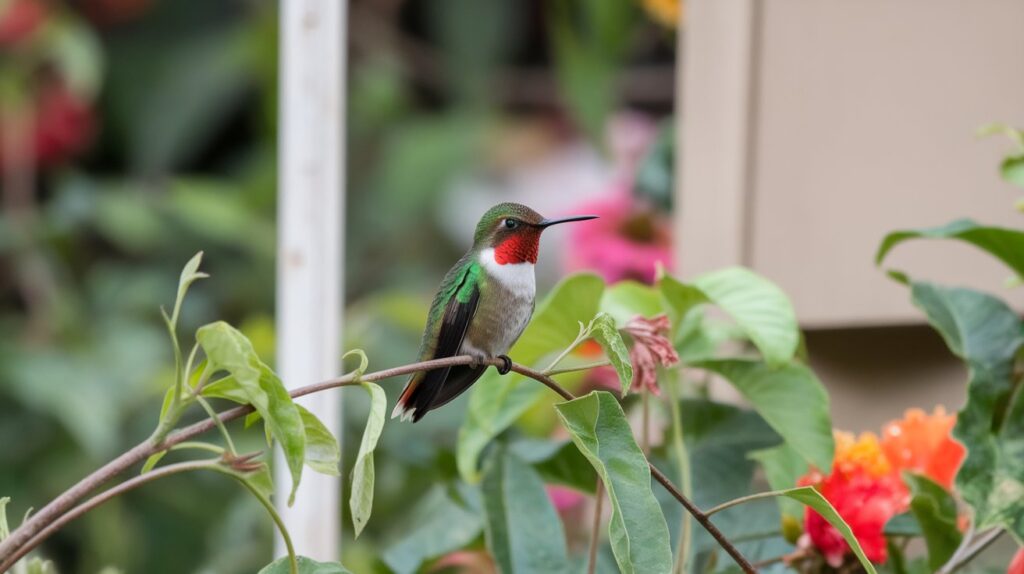
The Ruby-throated Hummingbird is Arkansas’s only regular hummingbird species. Males flash an iridescent red throat, while both sexes have emerald green backs and white underparts.
These tiny birds weighs less than a penny but migrates thousands of miles each year. Hummingbirds visits nectar feeders and flowers, hovering in place with wings that beats 50 times per second.
They arrives in April and stays until September before heading to Central America for winter.
18) Brown Thrasher
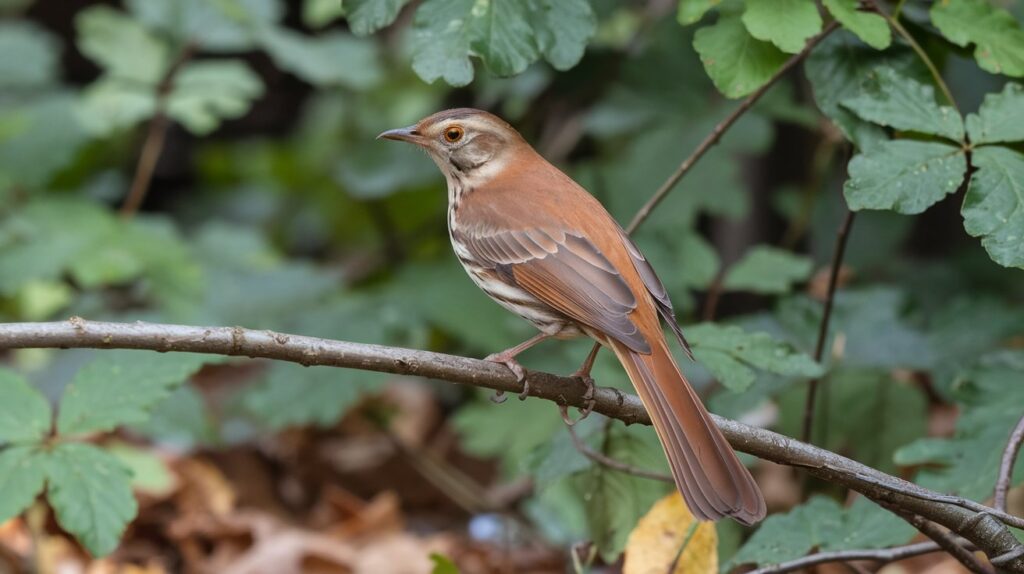
The Brown Thrasher has rusty-red upperparts and heavily streaked underparts with a long tail and slightly curved bill.
These birds skulks in dense shrubs but comes into the open to sing from high perches. Thrashers mimics other bird songs and can perform over 1,000 different song types.
They rakes through leaf litter with their bill looking for insects and spiders. Brown Thrashers visits yards with dense shrubs and ground feeding areas.
19) Indigo Bunting

The Indigo Bunting males shine with deep blue feathers that can look black in poor light. Females are plain brown with subtle wing bars and slight streaking.
These colorful birds arrives in Arkansas in spring after wintering in Central America. Buntings sings from treetops and power lines with a series of paired notes.
They visits black oil sunflower seed feeders but prefers white millet scattered on the ground or platform feeders.
20) Red-winged Blackbird

The Red-winged Blackbird males have glossy black feathers with brilliant red and yellow shoulder patches they displays while calling.
Females look completely different with brown streaking similar to a large sparrow. These birds gathers in huge flocks during winter but spreads out to defend territories in spring.
Blackbirds eats many insects during summer and switches to seeds in fall and winter. Their distinctive “conk-la-ree” calls fills marshes and field edges.
21) Eastern Towhee
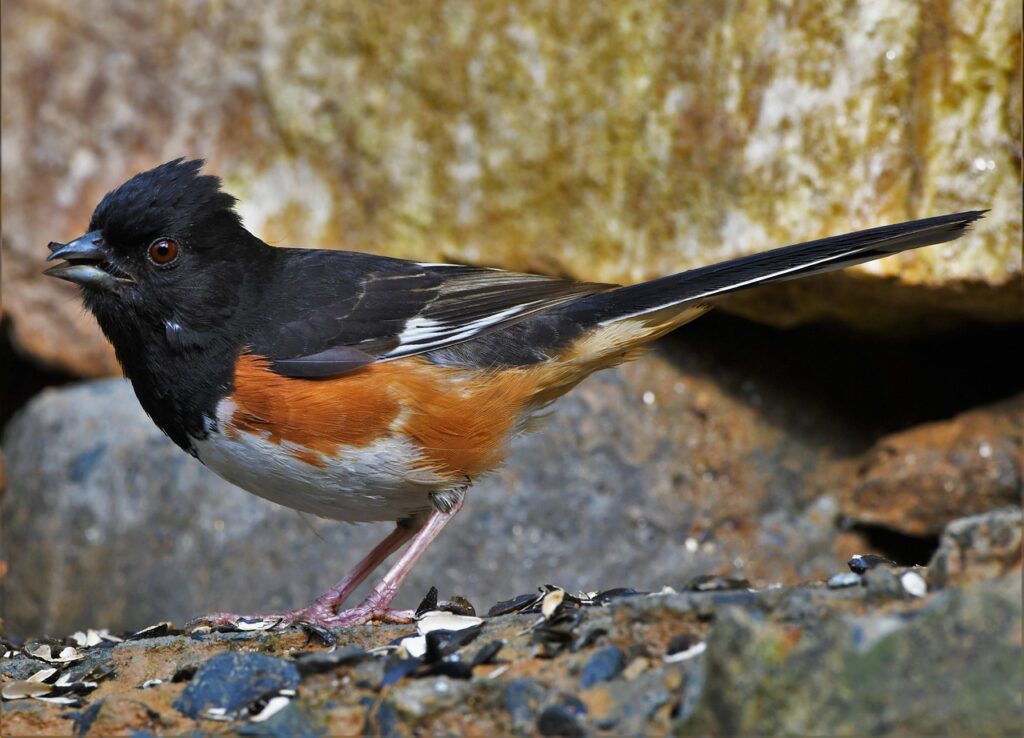
The Eastern Towhee has striking black (or dark brown) upper parts, rusty sides, and white belly. Their red eyes stands out against their black head.
These large sparrows scratches noisily in leaf litter using both feet at once in a backwards hop. Towhees sings a clear “drink-your-tea” song from deep within shrubs.
They mostly feeds on the ground under dense cover but will visit platform feeders placed near shrubs.
22) Cedar Waxwing
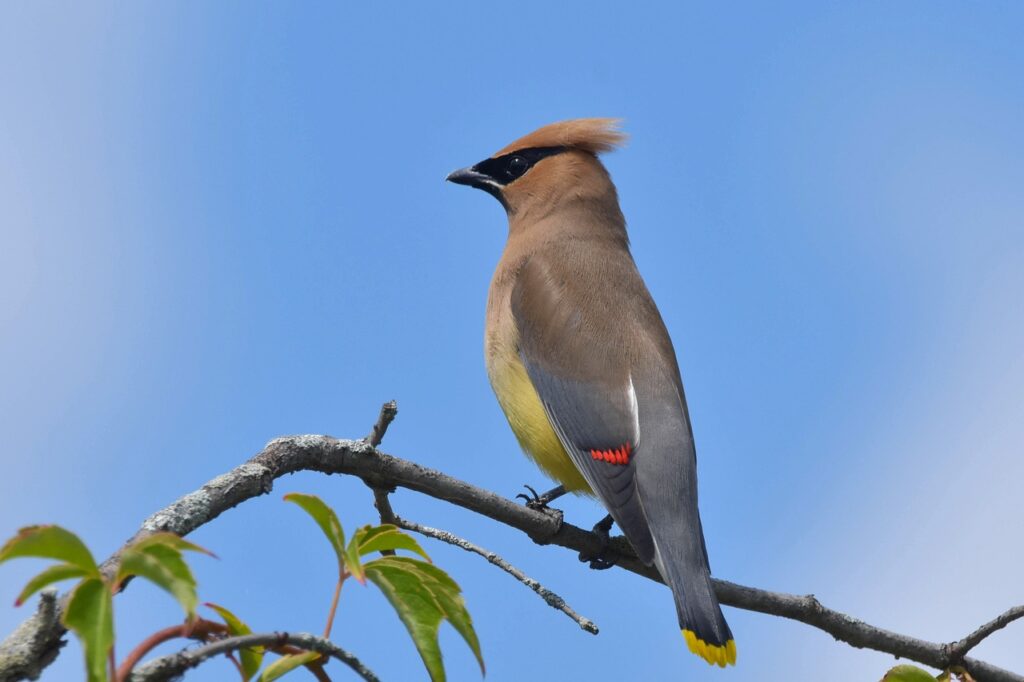
The Cedar Waxwing looks sleek with a tan crest, black mask, yellow-tipped tail, and distinctive red waxy tips on wing feathers.
These social birds travels in flocks that descends on berry-producing trees and shrubs. Waxwings passes berries down a feeding line, from bird to bird.
They rarely visits seed feeders but might be attracted to fruit or mealworms. Their high-pitched thin whistles and trills sounds unlike most backyard birds.
23) Yellow-rumped Warbler
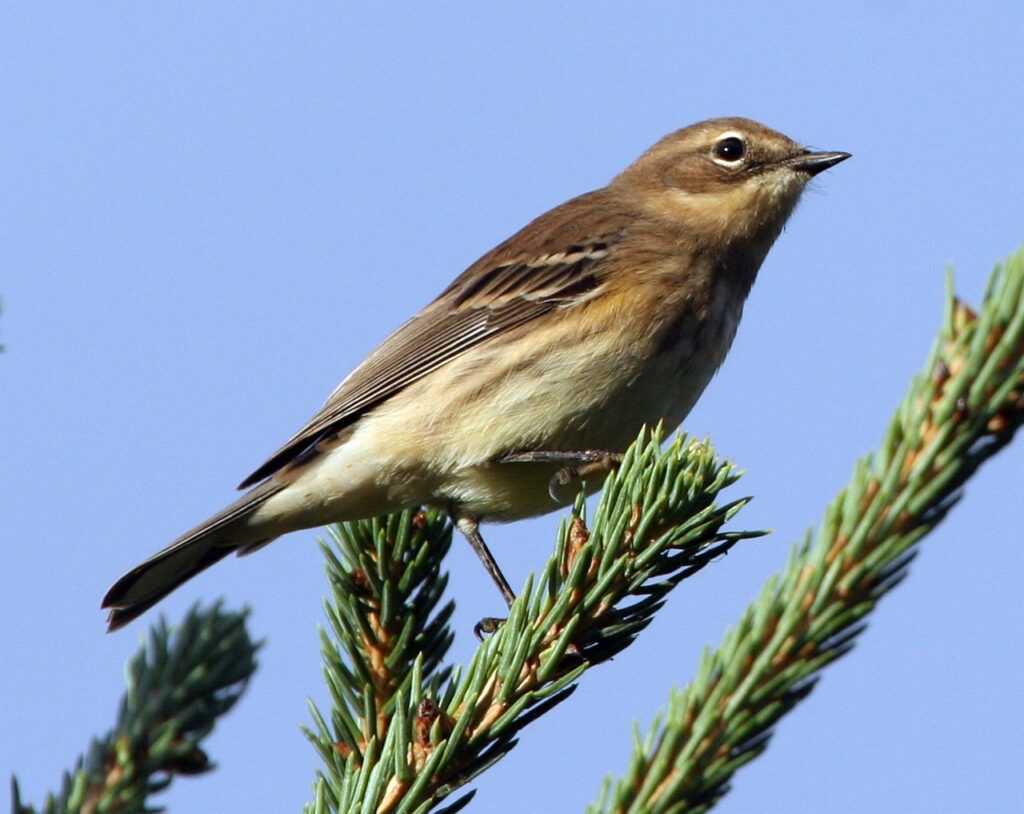
The Yellow-rumped Warbler shows flashes of yellow on its sides, crown, and rump patch that stands out against gray-blue back.
These active birds flits through trees catching insects and can also eat berries in winter. Warblers spends winters in Arkansas when most other warbler species have migrated further south.
They rarely visits feeders except for suet or fruit offerings. Their quick “check” calls and soft trilling songs fills winter woods.
24) Pine Siskin

The Pine Siskin looks like a heavily streaked small finch with subtle yellow edges on wings and tail.
These irruptive birds visits Arkansas in some winters but not others, depending on northern seed crops. Siskins feeds in noisy, tightly-packed flocks at nyjer and sunflower seed feeders.
They hangs upside down on tube feeders and even on tiny conifer cones. Their buzzy, rising “zreeeeeet” calls helps identify these winter visitors.
25) Chipping Sparrow
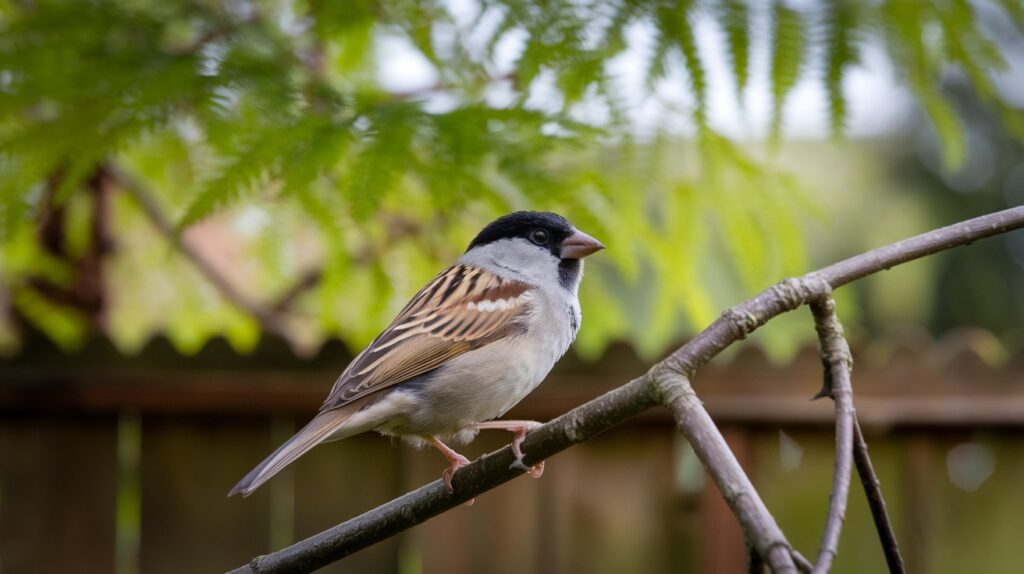
The Chipping Sparrow wears a bright rusty cap, black eye line, and grayish underparts during breeding season.
These small, slim sparrows becomes more dully colored in winter. Chipping Sparrows builds neat, hair-lined nests in evergreens and shrubs. They sings a long, dry trill that sounds like a sewing machine.
These friendly birds visits platform feeders for millet and sunflower seeds and often feeds on the ground directly beneath feeders.
- 24 Popular Backyard Birds In New Hampshire (With Pictures!) - March 24, 2025
- How to Attract Birds to a Window Feeder? (6 Expert Tips) - March 16, 2025
- How to Provide Water for Birds in Summer? (4 Easy Ways) - March 16, 2025


